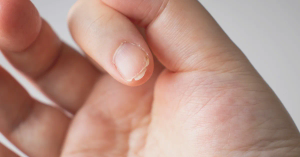Smile Makeover for Children: A Comprehensive Approach to Pediatric Dental Health
Dental health is a crucial aspect of a child’s overall development, and a smile is not only a reflection of oral hygiene but also a factor that significantly influences self-confidence. Children with dental irregularities, such as crooked teeth, discoloration, or malocclusion, may face social challenges that affect their self-esteem and quality of life. Pediatric dentistry has evolved to offer a solution that goes beyond routine dental care—smile makeovers for children.
A smile makeover for children focuses on improving both the function and appearance of their teeth, addressing common concerns such as misaligned teeth, tooth decay, and other aesthetic dental problems. While traditionally associated with adults, pediatric smile makeovers have become a specialized field within dentistry, offering tailored treatments that consider the unique needs of growing children.
The Importance of Smile Makeovers in Children
A smile makeover can be essential for children in cases where dental irregularities are more than just cosmetic concerns. These issues, if left untreated, can lead to long-term complications, including difficulty chewing, speech impediments, and an increased risk of tooth decay and gum disease. Studies have shown that early intervention in correcting dental problems can reduce the likelihood of these issues continuing into adolescence and adulthood [1].
Common Dental Issues in Children that May Require Smile Makeovers:
1.Misaligned Teeth (Malocclusion):
Malocclusion is a common issue where teeth are not properly aligned when the jaws close. This condition can affect how children bite, chew, and speak, and can lead to discomfort or even pain in the jaw. Early intervention with orthodontic treatments, such as braces or clear aligners, can effectively correct malocclusion and prevent more severe complications later in life [2].
2.Tooth Decay and Discoloration:
Tooth decay is one of the most prevalent chronic diseases in children. In cases where decay is visible, children can feel self-conscious about their appearance. Restorative treatments, including dental bonding or crowns, are part of a smile makeover that can address both the health and aesthetic concerns of decayed or discolored teeth [3].
3.Missing or Damaged Teeth:
In cases where a child has lost a tooth due to injury or decay, restorative dentistry can help improve their smile. Pediatric dentists use techniques such as space maintainers to ensure proper alignment as permanent teeth grow in. In some cases, pediatric crowns are used to repair damaged teeth and restore their function and appearance.
4.Crooked or Crowded Teeth:
Crowded or crooked teeth can cause difficulty with brushing and flossing, leading to a higher risk of cavities and gum disease. Orthodontic treatment, such as traditional braces or newer options like Invisalign, is often recommended to straighten teeth and improve both dental health and the appearance of the smile [4].
When to Consider a Smile Makeover for Your Child
Timing is crucial when considering a smile makeover for children. Dental development varies from child to child, and the ideal time for intervention depends on the specific issues being addressed. Most dentists recommend initial orthodontic evaluations by age 7, when permanent teeth begin to emerge, allowing dentists to spot early signs of dental misalignment or crowding [5]. Early detection enables proactive treatment, preventing the need for more extensive procedures later on.
In addition to orthodontic concerns, regular dental visits should include assessments of the child’s overall oral health, focusing on preventing tooth decay and maintaining healthy gums. Pediatric dentists can advise parents on the best course of action for correcting cosmetic and functional issues as the child grows.
Key Procedures in a Pediatric Smile Makeover
A smile makeover for children may include a range of treatments tailored to their specific needs. Some of the most common procedures are:
1.Braces and Clear Aligners:
These orthodontic treatments are designed to correct alignment issues such as crooked or crowded teeth. While braces are a traditional option, clear aligners have become increasingly popular for children due to their aesthetic appeal and comfort [6].
2.Dental Bonding and Crowns:
For children with chipped, broken, or decayed teeth, dental bonding or crowns may be used to restore the appearance and function of the teeth. These treatments are designed to blend seamlessly with natural teeth and can significantly improve a child’s smile [7].
3.Teeth Whitening:
In cases where teeth have become stained due to dietary habits or poor oral hygiene, pediatric dentists may recommend teeth whitening as part of the smile makeover process. However, this is typically done only for older children, as their teeth are still developing during their early years [8].
Conclusion
A smile makeover can transform a child’s dental health, improve their self-confidence, and ensure long-term oral wellness. By addressing functional and aesthetic concerns early on, pediatric dentists can help prevent complications later in life and give children the opportunity to enjoy a healthy, beautiful smile as they grow. Whether through orthodontics, restorative treatments, or preventive care, a smile makeover tailored for children offers both immediate and lasting benefits, making it a worthwhile consideration for parents aiming to ensure their child’s dental future.
References
1.Tsomos G, Ludwig B, Grossen J, Pazera P, Gkantidis N. Objective assessment of patient compliance with removable orthodontic appliances: A cross-sectional cohort study. Angle Orthod. 2014;84(1):56-61.
2.Souki BQ, Pimenta GB, Souki MQ, Franco LP, Becker HM, Oliveira DD. Early treatment of class II malocclusion with 2 types of appliances: A randomized clinical trial. Am J Orthod Dentofacial Orthop. 2012;142(4):437-443.
3.Tinanoff N, Reisine S. Update on early childhood caries since the Surgeon General’s Report. Acad Pediatr. 2009;9(6):396-403.
4.Al-Bitar ZB, Sonbol HN, Al-Omari IK. Reasons for orthodontic treatment in Jordanian children. Eur J Orthod. 2013;35(5):638-644.
5.American Association of Orthodontists. Timing of orthodontic treatment [Internet]. St. Louis: AAO; 2023 [cited 2024 Oct 9]. Available from: https://www.aaoinfo.org/timing-orthodontic-treatment.
6.Keim RG, Gottlieb EL, Nelson AH, Vogels DS 3rd. 2008 JCO Orthodontic Practice Study. J Clin Orthod. 2008;42(11):631-640.
7.Mouradian WE, Berg JH, Somerman MJ. Addressing disparities in children’s oral health: A dental-medical partnership to reduce early childhood caries. Health Aff (Millwood). 2009;28(2):404-412.
8.Carey CM. Tooth whitening: what we now know. J Evid Based Dent Pract. 2014;14 Suppl:70-76.








